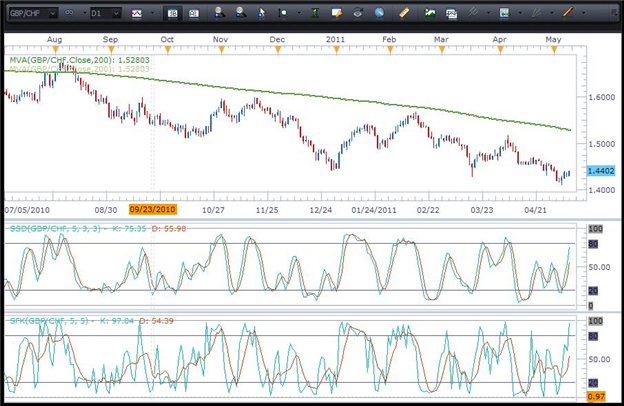Student's Question:What are the main differences between Fast Stochastics and Slow Stochastics?Instructor's Response:Below is a Daily chart on the GBPCHF currency pair with both a Slow and Fast Stochastic indicator on it Fast Stochastics is below and Slow Stochastics is above.

In principle, the trading rules are the same...a cross above 80 with a close below 80 indicates that momentum on the pair is bearish...to the downside. Conversely, a cross below 20 with a close above 20 indicates bullish momentum.
Crosses that take place between those levels are valid trading signals but have a lower reliability than do those occurring above 80 or below 20.We would advocate the use of the Slow Stochastics from the standpoint that it is more "readable" since it does not react as dramatically to every movement of price, no matter how large or small, that the pair may have. As can be seen on the chart below, Fast Stochastics is much more sensitive to price action and, as such, is often used by shorter term traders.Keep in mind that oscillators such as Stochastics will not predict trends. Rather they indicate momentum based on price action. A trader will identify the trend on the Daily chart and then use an oscillator like Stochastics to time their entry in the direction of the trend on the Daily chart when momentum is shown as being in that direction.So if the daily trend on a pair is bearish, a trader using Stochastics to enter the trade, would enter a short position when Stochastics had been above 80 and then closed below 80.




